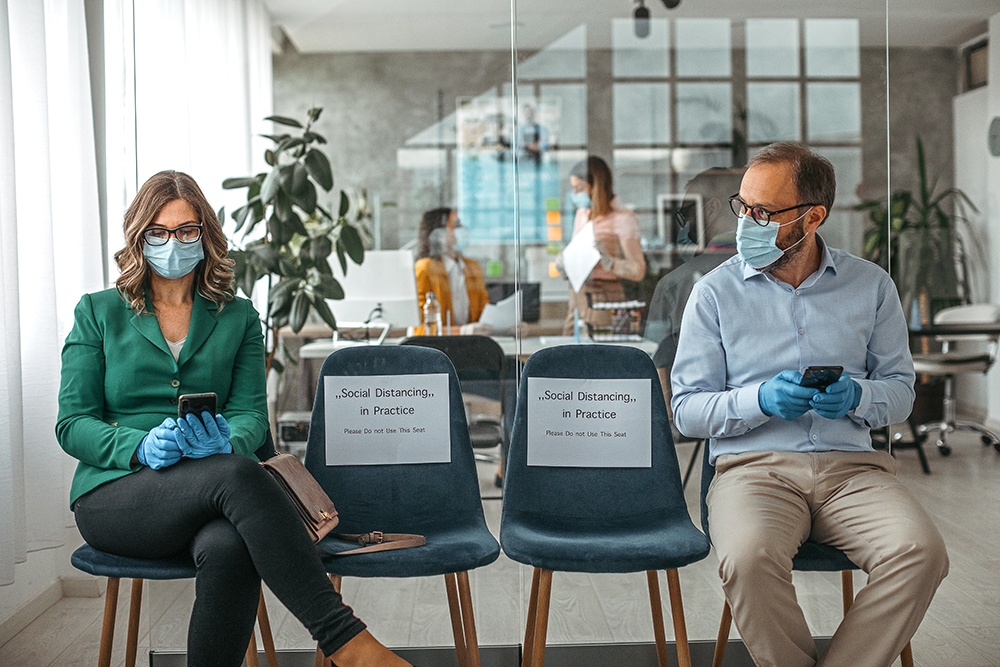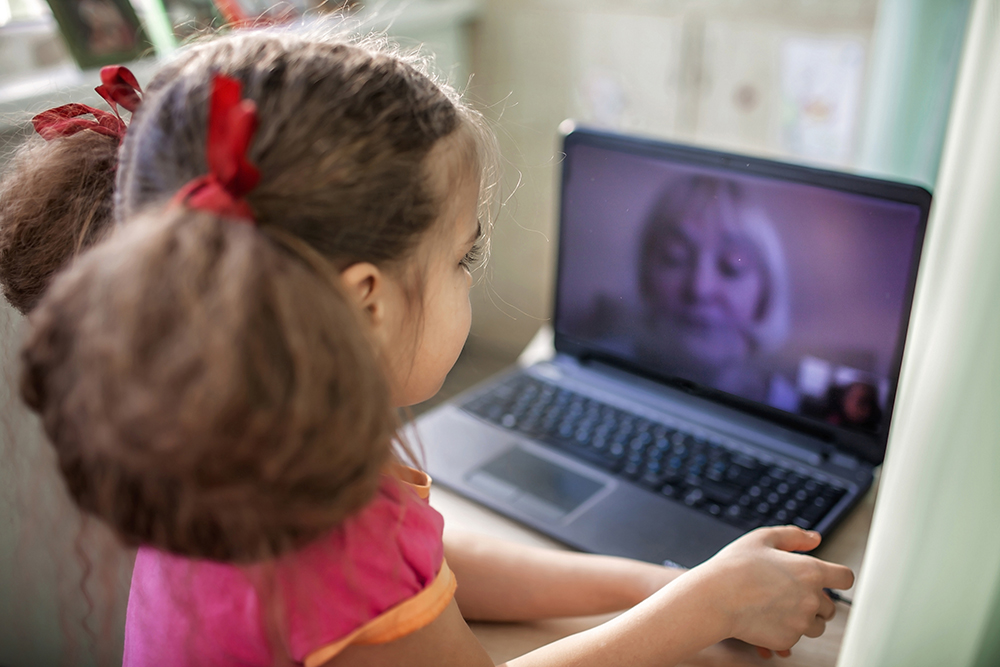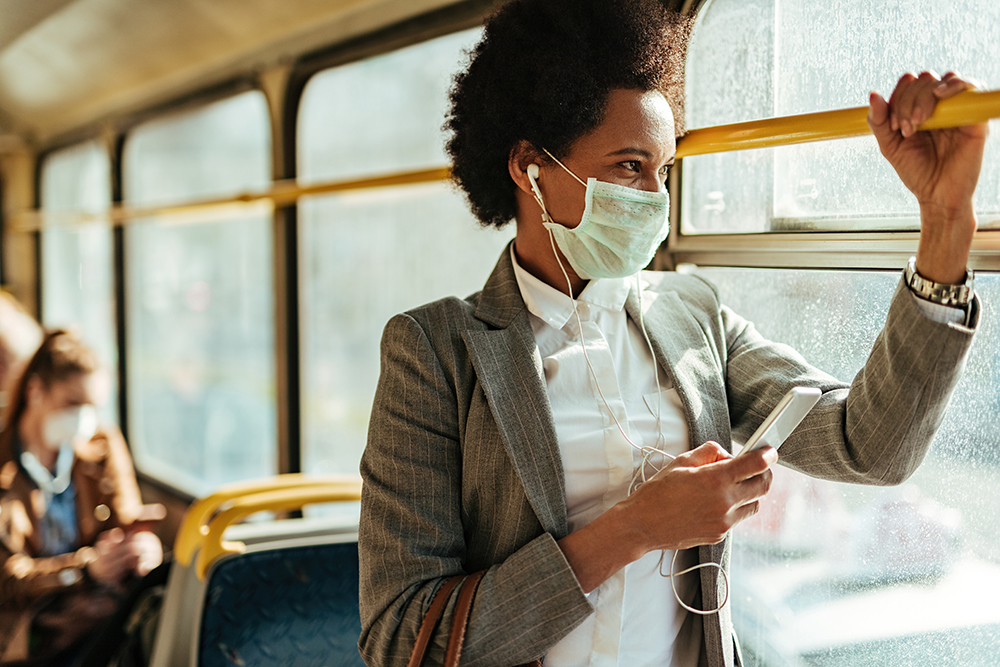Written by Jesse Cohn & Eli Glazier
There’s not doubt that over the past few months, the COVID-19 pandemic has drastically changed the way that we live, work, play and travel. However, some of these short-term impacts of the pandemic may extend into the future for years to come, long after we find a vaccine.
Experts and practitioners in transportation, real estate, economics, public health and other disciplines have shared their initial predictions of what life will look like in the wake of COVID-19.
And as planners who must prepare for these potential long-term changes and adapt accordingly, we have been listening closely. A core group of us at Montgomery Planning have spent the past few months reviewing recent articles forecasting the lasting impacts of COVID-19, interviewing a handful of local stakeholders to better understand how the pandemic may change Montgomery County and considering how those impacts would impact overall equity efforts. We’ve identified eight key takeaways from this review:
1. Continued Social Distancing: Experts are predicting that we will want and need to continue to social distance at least for the next year or two. This will impact programming in parks, transit service and how indoor spaces are used (e.g. offices, retail, arts spaces).
Equity Considerations: Transit agencies’ service reductions during the pandemic will exacerbate the existing transportation inequities borne by communities dependent on transit. Fewer trains or busses means those still using transit are less able to socially distance while riding it.

2. Accelerated Adoption of Technology: The pandemic has further normalized our use of technology for work, learning and recreation. Experts anticipate increased telework, virtual instruction, e-commerce and home entertainment in the coming years (with commensurate reductions in commuting, in-person shopping, theater attendance, etc.).
Equity Considerations: Our increased reliance on technology could expand disparities, both as a result of the digital divide, which leaves some disadvantaged communities with less access to new technology as well as the employment implications as demand for technology-related jobs swells.

3. Long-term Economic Impacts: While the pandemic may pass in the coming year, experts are preparing for the economic impacts to linger far longer. Planning for a “new normal” should account for these years of economic recovery. The economic impacts could include mass closures of retail (national chains and local businesses), increased homelessness, sustained unemployment and resulting government shortfalls.
Equity Considerations: The impacts of the economic fallout are not evenly distributed. Women and low-income workers have been more affected by the rise in unemployment.
4. Constrained Government Funding: With heightened unemployment and stalled economic activity, governments could experience reduced revenue in the coming years, which in turn would impact their ability to fully provide the services available before the pandemic. Practitioners across the board, including parks, arts and culture, and transit providers, have expressed concerns about funding.
Equity Considerations: Health and human services would likely be more limited during an extended recession, leaving governments unable to fully provide for the needs of low-income residents.
5. Exacerbated Inequities: Society was unequal before the pandemic, and the pandemic has widened our racial and socioeconomic disparities. Moving forward after the virus, we need to address the equity issues elevated during the crisis, such as housing crowding, travel options for those without vehicles, access to parks and open spaces, and preexisting health conditions resulting from air pollution.
6. Range of Housing Trends: Residents’ personal preferences in the wake of the pandemic vary. Some forces suggest a shift towards suburbanization, such as a desire for private green space, individual home access (versus a shared entrance), and increased telework (allowing workers to maintain high-paying jobs in the urban core while moving to an affordable suburb). The pandemic has also increased appreciation for walkable neighborhoods.
7. Shifting Travel Behaviors: Travel patterns may not return to pre-pandemic conditions. Telework has generally decreased travel, and overall travel could remain reduced if some telework continues after the pandemic. Transit ridership has dramatically decreased, and experts expect residents to travel more by personal vehicle in the future – both to socially distance and because congestion is lower than pre-pandemic levels (decreasing transit’s competitiveness). Bicycling has boomed during the pandemic, but we cannot know if its prevalence afterwards will continue.

8. Interrelated and Interdependent Impacts: None of these are standalone impacts – they are all interconnected. The anticipated economic impacts play a role in transit ridership. Increased telework impacts transportation choices, but also commercial office real estate and the restaurants and retail that support business districts.
While some of these trends are sector specific, such as those related to housing trends and travel behavior, others are cross-cutting. Trends associated with social distancing, technology, the economy, government funding, and inequities could have unique impacts in different sectors. The table below summarizes how these trends could impact housing, school and work, shopping and the arts, parks and open space, and travel.
In our next blog post, we will share our recommendations from a planning perspective for facing, and possibly reducing, some of the pandemic’s impact.
Anticipated COVID-19 Impacts Across Sectors
| A. Housing | B. Work/School | C. Shopping and Arts/Entertainment | D. Parks & Public Space | E. Travel | |
| 1. Continued Social Distancing | The forced interaction of sharing doors and elevators has caused some anxiety. Townhomes or single-family homes with individualized entrances has provided some comfort.[i] | Employers and schools are working to bring back employees and students safely. It’s expensive to retrofit these spaces.[ii] | Home deliveries allow people to avoid interactions with other shoppers. Museums and performing arts and exhibits might operate at reduced capacity.[iii] | One survey found that 73% of respondents feel that green space will be become a priority for urban buyers, with an additional 61% of respondents anticipating a rise in the demand for rural areas.[iv] | People may be scared to use public transit from a public health perspective. With bus services cut, people are crowded on to fewer buses or trains.[v] |
| 2. Accelerated Adoption of Technology | The opportunity to maintain a high-paying job (“located” in an urban area) while working from a more affordable location could increase demand for homes in the suburbs and exurbs.[vi] | Office tenants are considering renting less space as more employees work from home.[vii] | The trend toward online shopping is accelerating, which could cut already weak demand for retail space in downtown areas and malls. The classic movie theater chain is in trouble.[viii] The pandemic could expedite the shift to home entertainment. | Given that many more needs could be met at home, there may be an increased demand for local parks and public spaces. During the pandemic, local parks and trails have seen a rise in use. | Telework, telemedicine, and e-learning are likely to increase, reducing their need to access mobility. The magnitude of these shifts will depend on how long the pandemic persists.[ix] |
| 3. Long-Term Economic Impacts | Construction is hit hard during recessions. Creating more building opportunities by reducing restrictions and allowing for denser housing would be a stimulus for the industry.[x] Long-term economic impacts are likely to yield a decline in homebuying, and homelessness is poised to increase. | More than 36 million Americans filed for unemployment benefits in March and April 2020.[xi] Other long-term economic impacts are expected to include tenants owing back rent, property owners owing mortgage payments, and small business closures. Office rents are expected to fall 10.5% nationally this year.[xii] | Average retail rents are expected to fall 2.7% nationwide in 2020, and another 1.2% next year, surpassing declines seen during the Great Recession.[xiii] | In a recession, people may be more likely to recreate locally rather than travel, making use of nearby parks and open space. | Bus and rail ridership (and as a result, transit revenue) is sensitive to economic fluctuations, and the financial effect of COVID-19 will likely be long-lasting.[xiv] |
| 4. Constrained Government Funding | There’s uncertainty about how housing resources will be allocated. Properties with a lot of vouchers are doing well given continued state and federal support. Declining federal resources for housing will likely continue to be an issue. | Government will focus on essentials. Some agencies may experience layoffs and hiring freezes. Limited government hiring or employment impacts the purchasing power of those local workers. | Funding the arts and the humanities is often “the first thing to go,” Andrea Carroll-McNeil of Humanities D.C said.[xv] | Without funding to continue ongoing restoration initiatives, severe (possibly irreversible) impacts are expected. The consequence of inaction may unravel years of diligent restoration work and climate change mitigation measures.[xvi] | As local tax receipts go down, agencies will need to reckon with how we subsidize and operate our fragmented, inequitable transportation system.[xvii] |
| 5. Exacerbated Inequities | Crowding could be facilitating disease spread. Some cannot leave their home because they can’t practice social distancing in cramped entranceways, elevators and laundry rooms. Some cannot quarantine within the home or have the resources to quarantine elsewhere.[xviii] | Nearly 60 percent of the jobs lost in March, and 55 percent of those lost in April, were held by women.[xix] Almost 40 percent of workers in households making less than $40,000 a year have lost work.[xx] | A shift away from in-person retail and entertainment would likely disproportionately impact low-income workers. | The presence of law enforcement in public spaces can serve to intimidate and alienate would-be visitors. Communities of color face heightened police presence, which all too often plays out as negative interactions in public spaces.[xxi] | Transportation results in greenhouse gas emissions: a small increase in long-term exposure to air pollution leads to a large increase in the COVID-19 death rate.[xxii] |
[i] https://www-nytimes-com.cdn.ampproject.org/c/s/www.nytimes.com/2020/05/05/business/coronavirus-live-leave.amp.html
[ii] https://www.bloomberg.com/news/articles/2020-05-15/even-the-pandemic-can-t-kill-the-open-plan-office
[iii] https://www.theguardian.com/artanddesign/2020/apr/20/art-world-coronavirus-pandemic-online-artists-galleries
[iv] https://www.forbes.com/sites/garybarker/2020/05/15/how-might-buyer-and-seller-priorities-change-post-covid/#6ed96d6048e4
[v] https://www.citylab.com/transportation/2020/05/public-transit-riders-coronavirus-bus-subway-public-funding/611203/
[vi] https://www.nytimes.com/2020/06/17/realestate/a-run-on-the-catskills.html
[vii] https://www.nytimes.com/aponline/2020/06/24/business/bc-us-virus-outbreak-commercial-real-estate.html
[viii] https://www.euronews.com/2020/05/03/life-after-lockdown-how-has-coronavirus-changed-the-movie-industry-as-we-know-it
[ix] https://www2.deloitte.com/us/en/insights/economy/covid-19/future-of-mobility-after-covid-19-transportation-scenarios.html
[x] https://www.nytimes.com/2020/05/12/opinion/sunday/urban-density-inequality-coronavirus.html
[xi] https://www.nytimes.com/2020/05/15/opinion/sunday/homeless-crisis-affordable-housing-cities.html
[xii] https://www.nytimes.com/aponline/2020/06/24/business/bc-us-virus-outbreak-commercial-real-estate.html
[xiii] https://www.nytimes.com/aponline/2020/06/24/business/bc-us-virus-outbreak-commercial-real-estate.html
[xiv] https://www.citylab.com/transportation/2020/05/public-transit-riders-coronavirus-bus-subway-public-funding/611203/
[xv] https://www.wusa9.com/article/news/health/coronavirus/arts-and-culture-will-likely-look-different-once-coronavirus-pandemic-ends/65-23b87463-cd85-4988-b5a7-7b13491932fb
[xvi] https://riversideparknyc.org/wp-content/uploads/2020/05/Parks_and_Open_Space_Partners_NYC-Report_2020.pdf
[xvii] https://www.forbes.com/sites/timothypapandreou/2020/03/27/is-the-coronavirus-the-transportation-industrys-opportunity/#37af9bbb752b
[xviii] https://www.azuremagazine.com/article/urban-density-confronting-the-distance-between-desire-and-disparity/
[xix] https://www.vox.com/2020/6/10/21271170/coronavirus-great-recession-2020-pandemic-women-covid
[xx] https://www.nytimes.com/2020/05/15/opinion/sunday/homeless-crisis-affordable-housing-cities.html
[xxi] https://www.pps.org/article/public-space-management-and-the-nitty-gritty-of-inclusive-placemaking
[xxii] https://projects.iq.harvard.edu/covid-pm/home